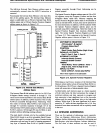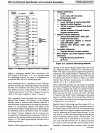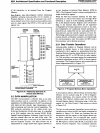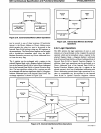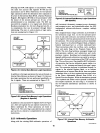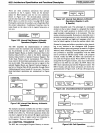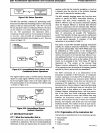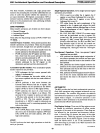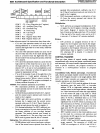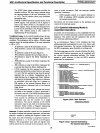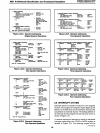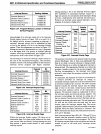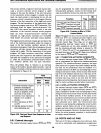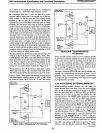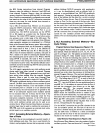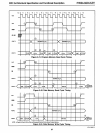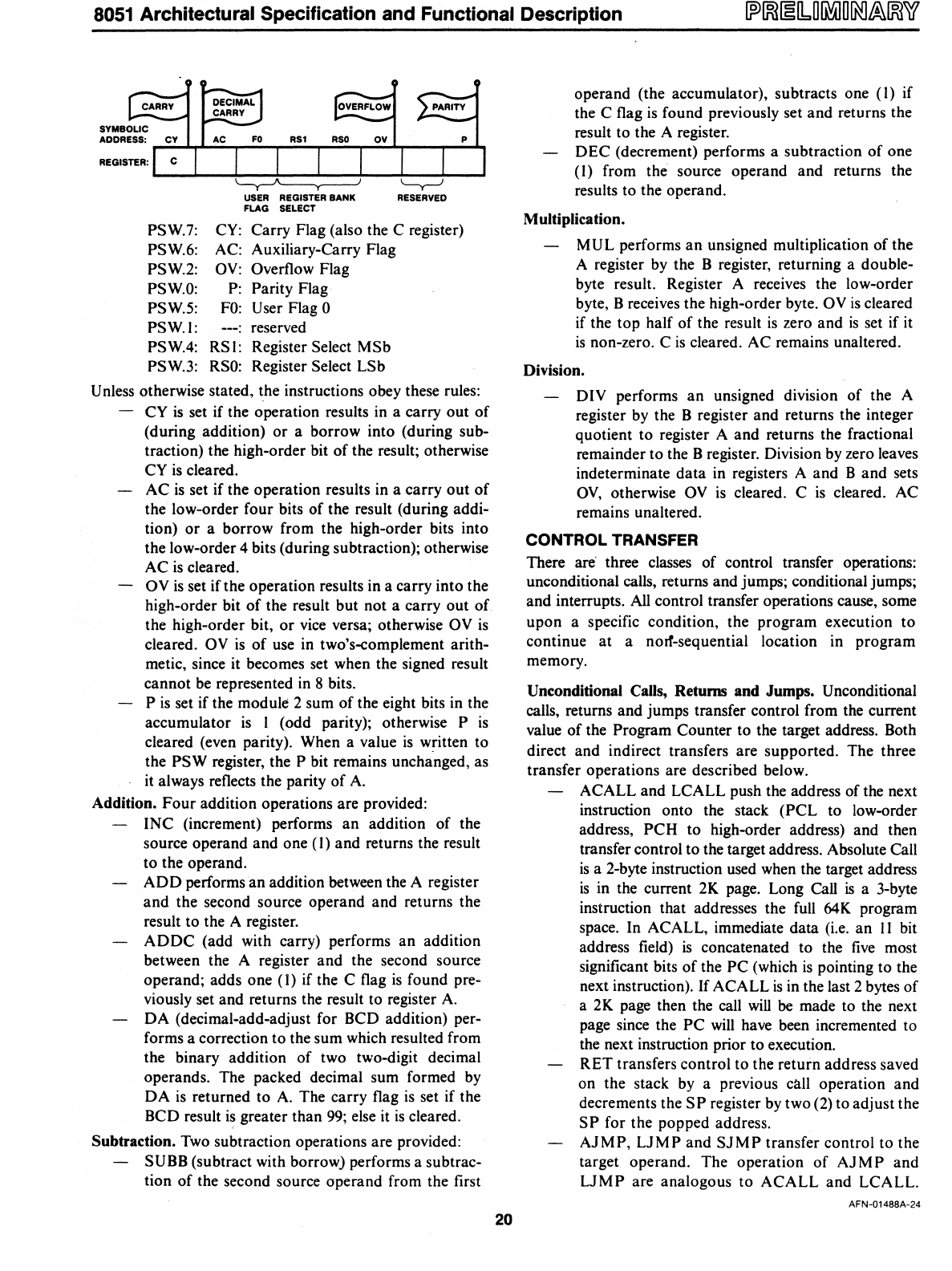
8051 Architectural Specification and Functional Description
CARRY
SYMBOLIC
DECIMAL
CARRY
PARITY
ADDRESS:
,...:::.:-....,...I.,...;;:....,....;.,;....,.....;.;.;;.;..-r-..;.;.;..;..,.....;.
.....
,....--r--P..,
REGISTER:
PSW.7:
PSW.6:
PSW.2:
PSW.O:
PSW.5:
PSW.I:
PSW.4:
PSW.3:
USER
REGISTER BANK
FLAG
SELECT
RESERVED
CY:
Carry Flag (also the C register)
AC: Auxiliary-Carry Flag
OV:
Overflow Flag
P: Parity Flag
FO:
User Flag 0
reserved
RSI: Register Select MSb
RSO:
Register Select LSb
Unless
otherwise stated, the instructions obey these rules:
CY
is
set if the operation results in a carry out
of
(during addition)
or
a borrow into (during sub-
traction) the high-order bit
of
the result; otherwise
CY
is
cleared.
AC
is
set if the operation results in a carry
out
of
the low-order four bits of the result (during addi-
tion)
or
a borrow from the high-order bits into
the low-order 4 bits (during subtraction); otherwise
AC
is
cleared.
o V
is
set if the operation results in a carry into the
high-order bit
of
the result but not a carry out
of
the high-order bit,
or
vice versa; otherwise OV
is
cleared.
OV
is
of
use in two's-complement arith-
metic, since it becomes set when the signed result
cannot be represented
in
8 bits.
P
is
set if the module 2 sum of the eight bits in the
accumulator
is
I (odd parity); otherwise P
is
cleared (even parity). When a value
is
written to
the
PSW register, the P bit remains unchanged, as
it always reflects the parity
of
A.
Addition.
Four
addition operations are provided:
INC (increment) performs
an
addition of the
source operand and one
(I)
and returns the result
to the operand.
ADD
performs an addition between the A register
and the second source operand and returns the
result to the A register.
ADDC
(add with carry) performs an addition
between the A register
and
the second source
operand; adds one
(1) if the C flag
is
found pre-
viously set and returns the result to register
A.
DA
(decimal-add-adjust for BCD addition) per-
forms a correction to the sum which resulted from
the binary addition of two two-digit decimal
operands. The packed decimal sum formed
by
DA
is
returned to A. The carry flag
is
set if the
BCD result
is
greater than
99;
else it
is
cleared.
Subtraction. Two subtraction operations are provided:
SUBB (subtract with borrow) performs a subtrac-
tion
of
the second source operand from the first
20
operand (the accumulator), subtracts one
(I)
if
the C flag
is
found previously set and returns the
result to the A register.
DEC
(decrement) performs a subtraction
of
one
(1) from the source operand and returns the
results to the operand.
Multiplication.
MUL performs
an
unsigned multiplication of the
A register by the B register, returning a double-
byte result. Register A receives the low-order
byte, B receives the high-order byte.
OV
is
cleared
if the top half
of
the result
is
zero and
is
set if it
is
non-zero. C
is
cleared. AC remains unaltered.
Division.
DIV performs an unsigned division of the A
register by the B register and returns the integer
quotient to register A and returns the fractional
remainder to the B register. Division by zero leaves
indeterminate
data
in registers A and B and sets
OV,
otherwise
OV
is
cleared. C
is
cleared. AC
remains unaltered.
CONTROL TRANSFER
There are' three classes of control transfer operations:
unconditional calls, returns and jumps; conditional jumps;
and interrupts. All control transfer operations cause, some
upon a specific condition, the program execution
to
continue
at
a noIf-sequential location in program
memory.
Unconditional Calls, Returns and Jumps. Unconditional
calls, returns and jumps transfer control from the current
value
of
the Program Counter to the target address. Both
direct and indirect transfers are supported. The three
transfer operations are described below.
ACALL and LCALL push the address of the next
instruction onto the stack (PCL to low-order
address, PCH to high-order address) and then
transfer control to the target address. Absolute Call
is
a 2-byte instruction used when the target address
is
in the current
2K
page. Long Call
is
a 3-byte
instruction that addresses the full
64K
program
space. In ACALL, immediate data (i.e. an II bit
address field)
is
concatenated to the
five
most
significant bits
of
the
PC
(which
is
pointing to the
next instruction). If ACALL
is
in the last 2 bytes
of
a 2K page then the call
will
be
made to the next
page since the
PC
will
have been incremented to
the next instruction prior to execution.
RET transfers control to the return address saved
on the stack by a previous
call operation and
decrements the
SP
register by two
(2)
to adjust the
SP
for the popped address.
AJMP,
LJMP
and
SJMP
transfer control
tothe
target operand. The operation
of
AJ M P and
LJMP
are analogous to ACALL and LCALL.
AFN-01488A-24



